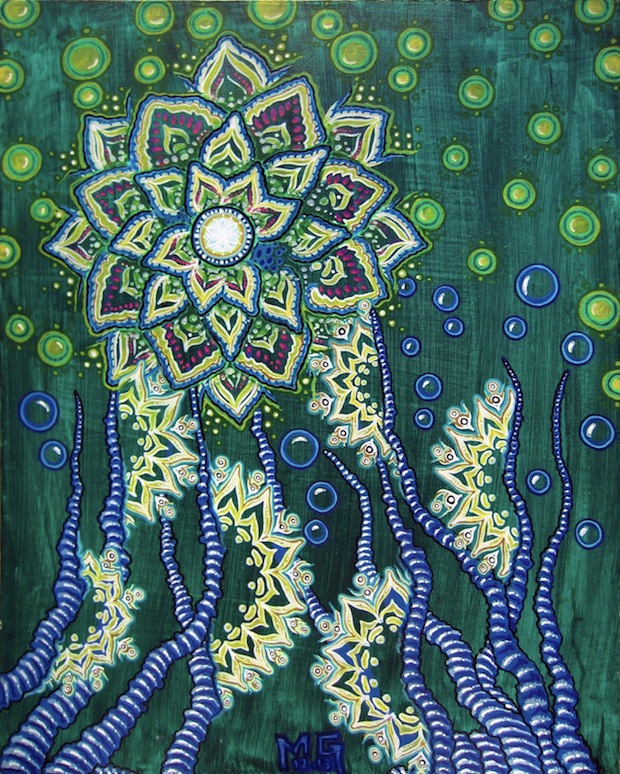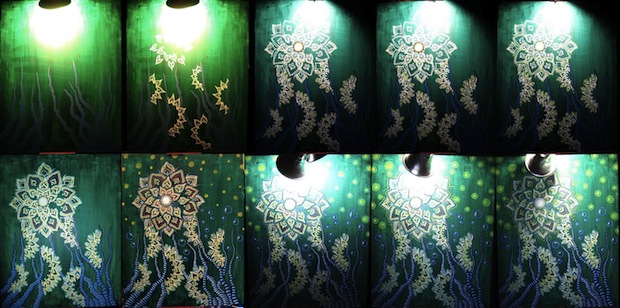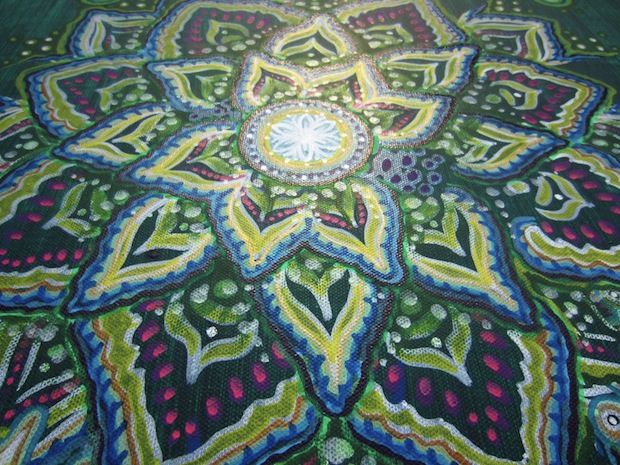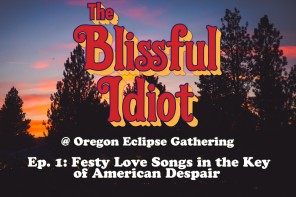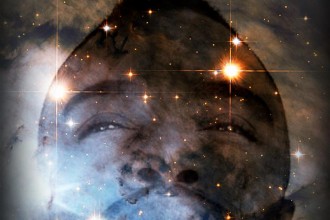Like/Comment/Share on FB
BUY 11″x17″ PRINTS ($15 plus s/h)
24″x 32″ – paint markers on stretched canvas
Painted live at:
2012 09 21, 22 Alloveus Music and Arts Festival
(Loose Leaf, Holding Space, Sheer Khan & The Space Case)
2012 11 16 The Parish (Austin, TX) (The Floozies)
2013 01 18, 19 Crown Plaza Hotel (IAAF Convention)
2012 01 20 The Granada (Eliot Lipp, Sound Remedy)
“It is absolutely impossible to transcend the laws of nature. What can change in historically different circumstances is only the form in which these laws expose themselves.”
– Karl Marx
I grew up in Los Angeles, Orlando, and Kansas City – three places with vivid recognition of their prehistory: L.A. has the La Brea Tar Pits; all of Florida is basically a giant fossil reef crawling with living fossils; and the whole Midwest has been for most of its existence a warm and shallow sea. No matter where I clambered as a kid, there were fossil shells beneath my feet.
On the one hand, it’s easy to imagine how ancient people, our ancestors, would have thought these grew out of the land – that the soil had its own simple kind of life, an intuition of our planet’s invisible bioplasm, the bacterial layer into which we are born and within which we live our entire lives. To a simple, natural religion for which life is an elemental force of nature, the stones themselves are living and “inanimate” is unthinkable. Crystals dream their own part in the world being, resting in an ageless knowing of geometric truth – direct apprehension of “the music of the spheres.” And so of course the Earth, just as the air and water, would spill forth its own kind of rocky life.
On the other hand, it’s native to my own upbringing, my own wild current culture, that the Earth is in a state of constant transformation. There are mountains where oceans used to be, and oceans where mountains used to be. As a child I would (and still do) frequently look across valleys or up at stretching architecture, and imagine it all under water. There are pictures of The Great Flood of 1993 all over Kansas City and Lawrence, where familiar buildings poked out like ruins from the water. Some of those buildings have lines on them above where I can jump to reach.
In recent years, as weather has become more unpredictable, there are more and more people around the world who have lived through these drastic shifts in local landscape. The not-always-ness of everything is sharper in relief. The utter sameness of the news cycle is increasingly a joke against the quickening fertile chaos of our daily experience. Everyone’s a Heraclitus, these days.
And yet that groundlessness has yet to really land itself in us. Physicists recently measured variations in what they call the “fine structure constant,” or the strength of the electromagnetic force. Modern science relies on universal constants in order to maintain its conceit that the universe can be essentially known; post modern science, by contrast, recognizes that all knowledge is relative and that what we have really sought and found are local consistencies.
Somewhere, billions of light years away, there are in all likelihood life forms dependent upon an entirely alien physics. We could never teleport to meet them, or even send a message by beaming a transmission. We would have to change, from inhabitants of our own physics to inhabitants of theirs, in order to make the trip.
This is the kind of change I believe we must hold in heart as we pass through the years to come…
****************************************************************************************
Paleontologist turned performing philosopher, Michael Garfield‘s multimedia maps of the evolutionary landscape and our place in it are an attempt to demonstrate that everything is equally art, science, and spiritual practice. Follow him on twitter: @michaelgarfield

